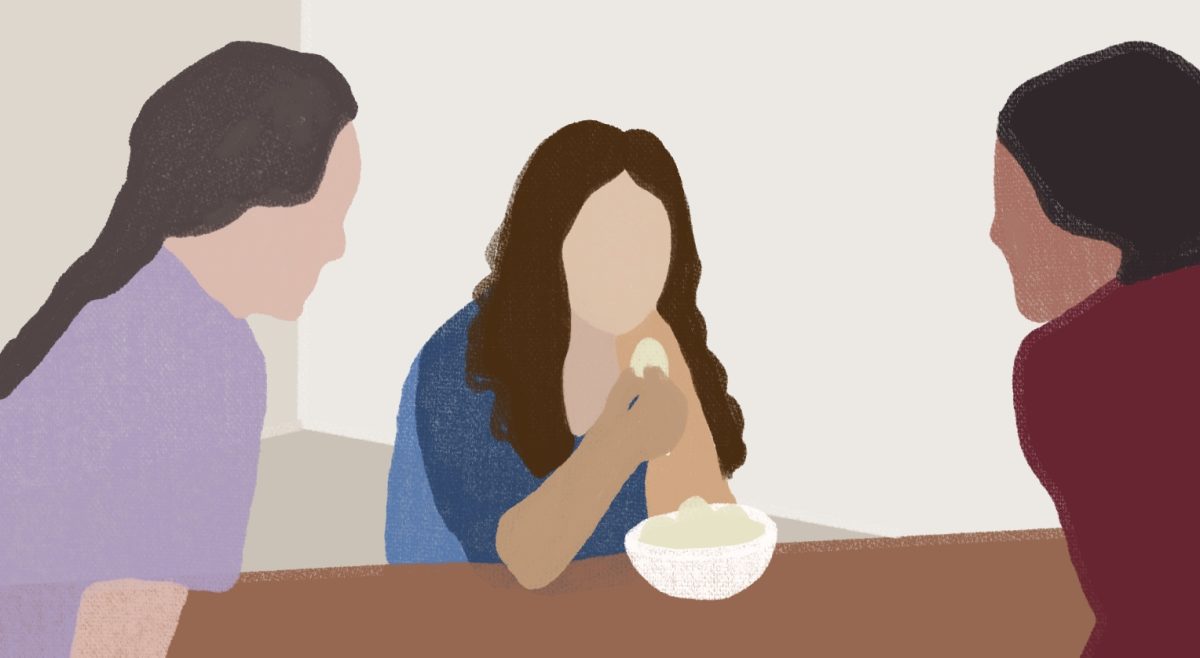Despite their shiny, high-tech exterior, the pervasion of checkout kiosks throughout several of Boston College’s on-campus eateries is creating congestion, discouraging human connection, and damaging these key communal spaces.
After being implemented first at Tully Cafe, then the Chocolate Bar, and most recently at Hillside Cafe, the kiosks have entrenched themselves in the everyday dining experience on campus.
Kiosk ordering systems are popping up all around the United States, expediting transactions at fast food and quick-service establishments. Their ability to reduce costs and increase efficiency is apparent. So why shouldn’t they be implemented on BC’s campus?
“Now every student is pretty much a number,” explained Chloe DeForest, a student employee at Hillside and MCAS ’26. “I feel kind of like a robot just running around, grabbing stuff for people.”
BC is not a corporation accountable for delivering maximal profitability to shareholders. Instead, it must consider what is best for its students in addition to its bottom line. As kiosks fully replace human checkout systems at these campus locations, students lose a social element of the on-campus dining experience.
In a time of rising social isolation—largely due to technology and the widespread reliance on smartphones—forcing students to use yet another screen only adds to the problem.
“Every class at BC talks about the importance of actually communicating with people,” said a student manager at Hillside. “[Contactless ordering] is so against BC’s mission.”
But the consequences of the kiosks go beyond a change in atmosphere—the machines are causing administrative problems too. Discontent with the contactless-ordering system has caused staffing shortages and low workplace morale, complicating the day-to-day operations of cafes across campus, according to a senior student manager.
“We had a very, very high turnover from the implementation of the kiosks to this semester,” said a senior student manager at Hillside. “Even weeks after the kiosks, people were already saying, ‘Oh, I’m just really stressed and want to cut down on my hours,’ and they just ended up quitting.”
And who could blame them? The anti-social experience of preparing orders from an ever-populating list of virtually submitted demands is just plain lonely.
“The people who got hurt the most with the socialization aspect were the workers,” the student manager said. “You’re so removed.”
Student employees said they were given little notice about the changes to the ordering system and were overwhelmed by the sudden adjustments they had to make to their work habits.
And let’s be clear—kiosks could have been a positive supplement to BC Dining’s existing infrastructure. Mobile ordering through the GET Mobile app, for example, coexists with traditional checkout registers.
Kiosks could have provided another avenue for ordering, clearing up congestion during peak hours. For students in a hurry, mobile or kiosk ordering could be a convenience, while those with more time could strike up a conversation while ordering. Why limit options for students?
BC Dining realizes this.
“I think feedback in the spring was really targeted around Hillside,” said BC Dining Director Beth Emery. “It’s kind of the senior hangout, and they missed some of the customer interaction. So we’ve tried to build a little bit of that in at the coffee bar, and we have that issue at Chocolate Bar too, and we’ve worked really hard at that.”
While plans for integrating kiosks into full-service dining halls on campus do not yet exist in the short term, Emery mentioned a potential implementation at Addie’s.
BC Dining is not moving away from kiosks. But if it realizes the shortcomings of the system, it should take active steps to improve them—not roll them out further.
The Heights’ prescription is not to reverse course, but instead to avoid limiting the experience and keep the in-person checkout lanes open.
On-campus dining locations are a key space for communal experience and conversation. Let’s keep them that way.











